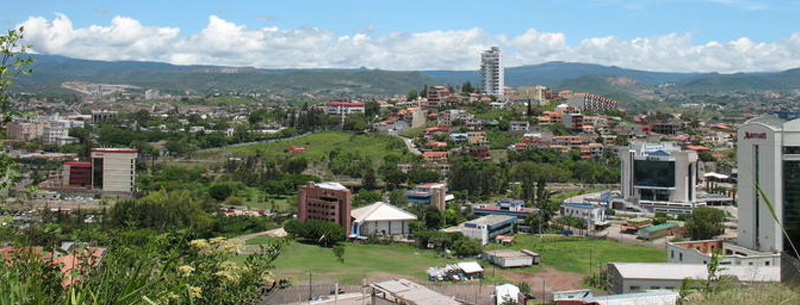Tegucigalpa, capital city of Honduras
Tegucigalpa, or just “Tegus,” as the locals call it, is a vibrant capital nestled in a valley with a colonial center and surrounded by sprawling residential neighborhoods. The Honduran capital is home to a charming historic downtown area, a wide variety of restaurants and a handful of outstanding museums. Rewarding and invigorating, the city is one of the most unforgettable in Central America.
The streets of Tegucigalpa are a bit of a labyrinth, but walking them is the best way to experience the city. There is no place more rewarding to wander than the old Parque la Leona neighborhood. Overlooking the central park and surrounded by steep, winding streets, the neighborhood is quintessentially Honduran. Tiny restaurants serve hot tamales and deep-friend pastelitos de carne, locals sip on Salva Vida while enjoying spectacular views of the city, and Garifuna music echoes throughout the streets, played by live bands both in the park and on the corners.
The city is peppered with other parks, breaking up the concrete cityscape with patches of open green space. The Parque Naciones Unidas el Picacho offers great views of the city from the north and was founded in honor of the 40th anniversary of the United Nations. The views are even more impressive from the Parque la Paz, a wooded area south of the National Stadium. At the Parque la Concordia, visitors may think they have been transported to Copan because of the excellent reproductions of Maya ruins, including many stone carvings and a pyramid. In all of these parks, locals gather to relax, socialize and embrace life among the lush and verdant surroundings.
Both young and old visitors will enjoy Chiminike, the capital’s children’s museum. Just south of the downtown district, the exhibits cater to kids of all ages. Infants can relax in a peaceful area made just for them while adolescents can learn about Maya history in an age-appropriate gallery. Everyone will have fun learning about the human body as they crawl through a giant digestive tract and discover the hows and whys of sneezing, burping and other bodily functions. Refreshingly frank, the exhibits combine education and entertainment in an innovative and effective way.
Far less whimsical but no less interesting is the Museo Nacional de Historia y Antropologia Villa Roy. The fascinating and intense museum is housed in the ex-president’s former mansion, and it tells the story of Honduran history from the struggle for independence through today. All visitors should pay careful attention to the detailed exhibit about the rise of the Standard and United Fruit companies, an event that significantly shaped the past and present of the country.
The Galeria Nacional de Arte is also worth exploring. Located in a 17th-century convent, the museum displays eye-catching modern artwork, inspiring religious artifacts and impressive colonial-era paintings in rooms filled with light.
Part museum, part working church, the Basilica de Suyapa is the most important church in all of Honduras. Built in honor of Central America’s patron saint, the first stones of the basilica were laid in 1954, but the finishing touches are still being added today. Pilgrims descend on the mammoth white-and-gray basilica on the saint’s feast day of February 3, but it is worth visiting any day to see the sky-blue stained-glass windows that come alive in the sunlight.
While in Tegucigalpa, also take time to visit the Iglesia la Merced, the Iglesia Los Dolores, the Centro de Documentación Historica, the Museo Para la Identidad Nacional, the Iglesia el Calvario, the Museo Histórico Militar, the Iglesia de San Francisco and the Museo del Hombre Hondureño, which contains a small but interesting collection of modern Honduran art.
Tegucigalpa Geographical Location
Tegucigalpa is located in south-central Honduras on the Choluteca River. It is Honduras’ largest city with a population of approximately 1,324,000 in the metropolitan area.
Tegucigalpa Language
Spanish is the official language of Honduras with Amerindian dialects common throughout the country.
Tegucigalpa Predominant Religion
- 97% Roman Catholic
- 3% Protestant
Religious freedom is provided by the constitution of Honduras. The Mayan religion was the traditional religion of Honduras but there is little influence remaining since the 16th century when the Spanish converted Hondurans to Christianity.
Tegucigalpa Currency
The Lempira is the official currency of Honduras.
Tegucigalpa Climate
It is warm throughout the year in Tegucigalpa with April and May becoming uncomfortably hot at times. There is a rainy season that spans from May until October.
Tegucigalpa Main Attractions
- Parque el Picacho
- National Zoo
- Museo para la Identidad Nacional
Other Attraction in Tegucigalpa
- Park La Leona
- Parque La Leona
- Parque Central
- Iglesia de la Inmaculada Concepcion
